Venice Carnival Guide: History, Mask Traditions & Festival Closing Date
Ready to explore Venice Carnival magic? Discover the dazzling Venice Carnival history spanning centuries, learn about iconic Venice Carnival mask traditions, and find out exactly when does the Carnival of Venice end each year. This ultimate guide covers everything from 12th-century origins to modern celebrations, featuring stunning masquerade costumes, grand canal events, and insider tips for experiencing Europe's most glamorous festival. Perfect for travelers planning their Venetian adventure!
Table of Contents
Venice Carnival
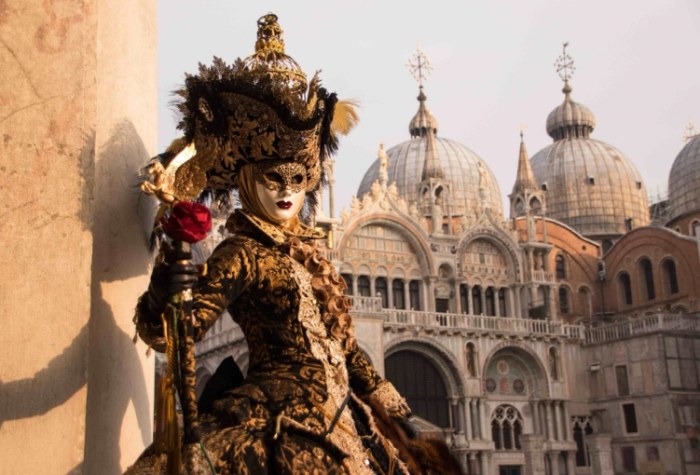
A Grand Spectacle of Colors and Sounds
The Venice Carnival is an event that transforms our city into a magical realm of vibrant colors and enchanting sounds. Every year, as the carnival approaches, the streets are adorned with elaborate decorations. Flags of all hues flutter in the gentle breeze, and the air is filled with the melodious tunes of street musicians. The canals, which are already a sight to behold, become even more picturesque with the addition of decorated boats.
Local artisans work tirelessly to create these stunning displays. They use traditional materials and techniques to ensure that the carnival atmosphere is authentic and unforgettable. The colors are so vivid that they seem to come alive, creating a visual feast for both locals and tourists alike.
The Allure of St. Mark's Square
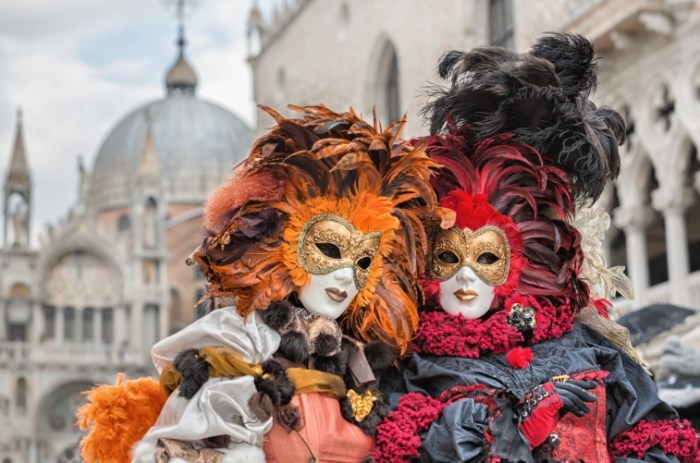
St. Mark's Square is the heart of the Venice Carnival. During the carnival period, it becomes a bustling hub of activity. People from all over the world gather here to witness the grand parades and events. The square is filled with the sound of laughter, music, and the clinking of glasses as people enjoy the festivities.
The historic buildings that surround the square provide a magnificent backdrop for the carnival. The Basilica of St. Mark, with its intricate mosaics and Byzantine architecture, shines even brighter under the carnival lights. The Doge's Palace, a symbol of Venice's rich history, also adds to the grandeur of the occasion.
Carnival Events and Parades
One of the highlights of the Venice Carnival is the series of events and parades that take place throughout the city. The Grand Parade is a must - see event. It features floats adorned with flowers, feathers, and other decorative elements. Participants dress up in elaborate costumes and wear the famous Venice Carnival masks.
There are also smaller parades in different neighborhoods of the city. These parades often have a more local flavor, showcasing the unique traditions and culture of each area. The children's parade is particularly charming, with little ones dressed up as fairies, superheroes, and other characters.
The Role of Music and Dance
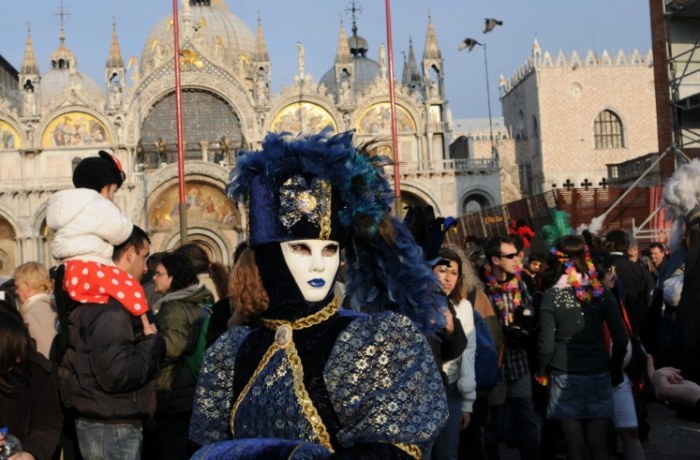
Music and dance play a vital role in the Venice Carnival. Street performers can be found everywhere, playing traditional Venetian music on instruments such as the accordion and the violin. The rhythmic beats of the music draw people in, encouraging them to dance and celebrate.
There are also formal dance events held in some of the city's historic palaces. These dances are a chance for people to dress up in their finest costumes and masks and enjoy an evening of elegance and sophistication. The dances often follow traditional steps and patterns, adding to the sense of nostalgia and cultural continuity.
Food and Delicacies During Carnival
No celebration in Italy is complete without delicious food, and the Venice Carnival is no exception. During the carnival period, you can find a variety of traditional Venetian delicacies. One of the most famous is the frittelle, a type of sweet fried doughnut filled with cream or jam.
There are also street vendors selling all sorts of snacks and treats. From roasted chestnuts to savory pastries, there is something to satisfy every palate. Many restaurants also offer special carnival menus, featuring dishes that are prepared using traditional recipes passed down through generations.
The Carnival's Impact on Tourism
The Venice Carnival has a significant impact on the city's tourism industry. Every year, thousands of tourists flock to Venice to experience this unique event. The influx of visitors brings a boost to the local economy, as hotels, restaurants, and shops see an increase in business.
However, the popularity of the carnival also brings some challenges. The city can become overcrowded, and there are concerns about the impact on the environment and the preservation of the city's historic sites. Local authorities are constantly working to find a balance between promoting tourism and protecting the city's heritage.
Venice Carnival History
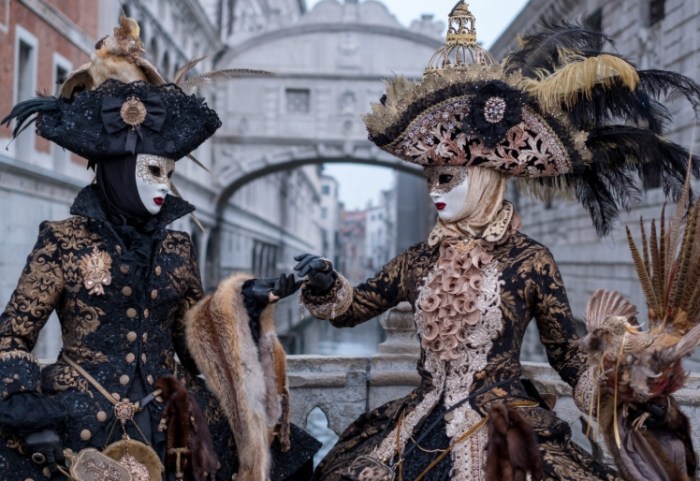
Origins and Early Celebrations
The origins of the Venice Carnival can be traced back to the 11th century. It was initially a religious festival associated with the period before Lent, a time of fasting and penance in the Christian calendar. The word "carnival" itself is thought to come from the Latin "carne levare," which means "to remove meat," as it was a time when people would indulge in rich foods before the start of Lent.
In its early days, the Venice Carnival was a more subdued affair. It was mainly celebrated by the nobility and the clergy. The festivities included religious processions and feasts. However, over time, the carnival began to take on a more secular and festive character.
The Golden Age of the Venice Carnival
The 18th century is often referred to as the golden age of the Venice Carnival. During this period, the carnival reached its peak of popularity and extravagance. The city was a major trading power, and the wealth of the Venetian merchants allowed for lavish celebrations.
The carnival became a time when social barriers were temporarily broken down. People of all classes would don masks and costumes, allowing them to mingle freely. The famous Venice Carnival masks played a crucial role in this, as they provided anonymity and a sense of freedom.
Decline and Revival
The 19th century saw a decline in the popularity of the Venice Carnival. The fall of the Venetian Republic in 1797, followed by the French and Austrian occupations, led to a loss of interest in the traditional festivities. The carnival was eventually banned in 1797 and did not make a full - fledged comeback until the 20th century.
In the 1970s, there was a renewed interest in preserving and reviving the Venice Carnival. Local organizations and the city government worked together to bring back the traditional elements of the carnival. The first modern - day Venice Carnival was held in 1979, and since then, it has grown in popularity and scale.
Carnival in the 20th Century
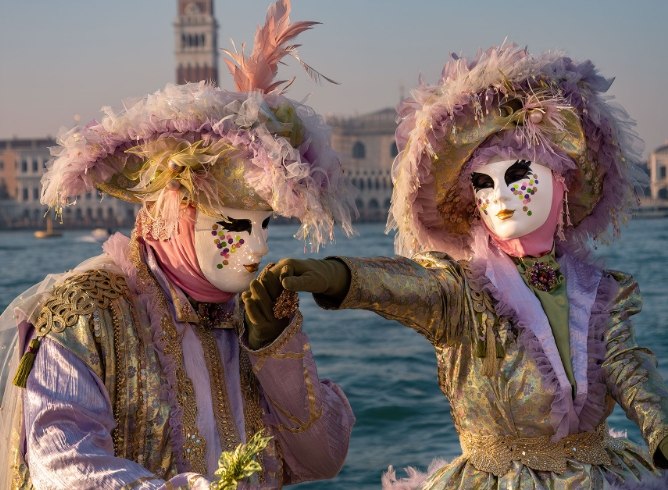
Throughout the 20th century, the Venice Carnival continued to evolve. It became more of a tourist attraction, drawing visitors from all over the world. The focus shifted towards creating elaborate costumes and masks, and the events became more organized and professional.
The carnival also became a platform for showcasing Venetian culture and traditions. Local artisans were given the opportunity to display their skills in mask - making and costume design. The carnival became a way to keep the city's rich history alive and pass it on to future generations.
Modern - Day Carnival Celebrations
Today, the Venice Carnival is a major international event. It lasts for two weeks and includes a wide range of activities. From the opening ceremony to the grand finale, every day is filled with excitement and entertainment.
The carnival now attracts a diverse group of participants, including professional performers, amateur enthusiasts, and tourists. It has become a symbol of Venice's cultural identity and a source of pride for the local community.
Cultural Significance Through History
The Venice Carnival has always held great cultural significance for the city. It has been a way for the people of Venice to express their creativity and celebrate their unique heritage. The carnival has also played a role in shaping the city's social and political landscape.
In the past, it was a time when people could challenge the social order and express their opinions freely. Today, it continues to be a time when the city comes together to celebrate its past, present, and future.
Venice Carnival Mask

The Symbolism Behind the Masks
The Venice Carnival masks are more than just decorative items; they are rich in symbolism. The anonymity provided by the masks allowed people to escape their daily lives and assume a new identity. It was a time when social norms could be temporarily ignored, and people could interact with each other on a more equal footing.
The masks also represented the idea of transformation. By putting on a mask, a person could become someone else, whether it was a noble, a commoner, or a mythical creature. This transformation was a way for people to explore different aspects of their personality and experience the world from a new perspective.
Types of Traditional Venice Carnival Masks
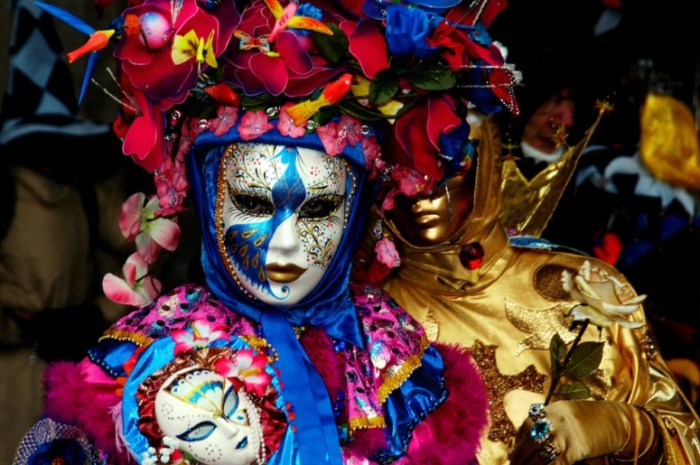
There are several types of traditional Venice Carnival masks. The Bauta mask is one of the most well - known. It covers the entire face, leaving only the mouth and chin exposed. It was often worn with a tricorn hat and a long black cloak, creating a mysterious and elegant look.
The Moretta mask is another classic. It is a small, oval - shaped mask that is held in place by the wearer biting on a button inside the mask. This mask was typically worn by women and gave them a sense of allure and mystery.
The Colombina mask is a more decorative option. It only covers the upper part of the face, leaving the mouth free. It is often adorned with feathers, jewels, and other embellishments, making it a popular choice for those who want to show off their style.
Mask - Making Craftsmanship
The art of mask - making is a highly skilled craft that has been passed down through generations in Venice. Local artisans use traditional materials such as papier - mâché, leather, and fabric to create the masks. The process is time - consuming and requires great attention to detail.
First, the artisans create a mold of the mask using clay or plaster. Then, they apply layers of papier - mâché or leather to the mold, allowing each layer to dry before adding the next. Once the mask has taken shape, it is painted and decorated with intricate designs. Each mask is a unique work of art, reflecting the skill and creativity of the artisan.
The Mask's Role in Social Interaction
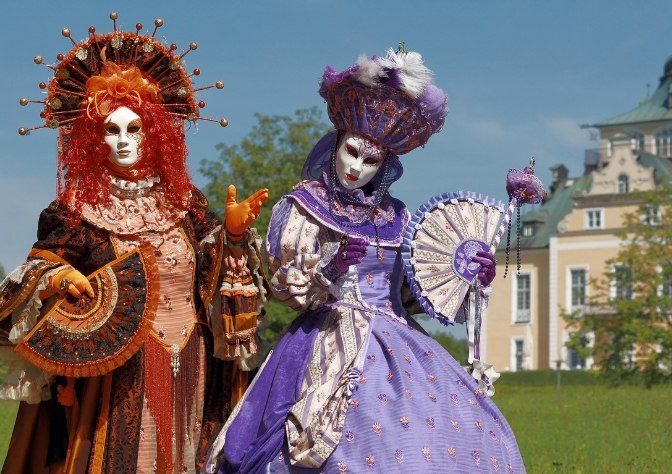
During the Venice Carnival, the masks play a crucial role in social interaction. They allow people to interact with each other in a more relaxed and uninhibited way. Without the constraints of social status and identity, people are more likely to strike up conversations and make new friends.
The masks also add an element of mystery and excitement to the festivities. You never know who is behind the mask, which creates a sense of anticipation and intrigue. It is this sense of anonymity and the possibility of meeting someone new that makes the carnival such a special event.
Masks in Modern Carnival Celebrations
In modern times, the Venice Carnival masks have become an iconic symbol of the event. They are not only worn during the carnival but are also popular souvenirs for tourists. Mask - making has become a thriving industry in Venice, with many shops selling a wide variety of masks.
Some masks are still made using traditional methods, while others incorporate modern materials and designs. However, the essence of the mask remains the same - it is a symbol of the Venice Carnival and the unique culture of our city.
Collecting and Preserving Venice Carnival Masks
For many people, collecting Venice Carnival masks is a passion. These masks are not only beautiful works of art but also a piece of history. Collectors often look for rare and unique masks, such as those made by famous artisans or those that represent a particular era of the carnival.
Preserving these masks is also important. Museums and cultural institutions in Venice have collections of masks that showcase the evolution of mask - making over the centuries. By preserving these masks, we are ensuring that future generations can appreciate the rich history and culture of the Venice Carnival.
When Does the Carnival of Venice End
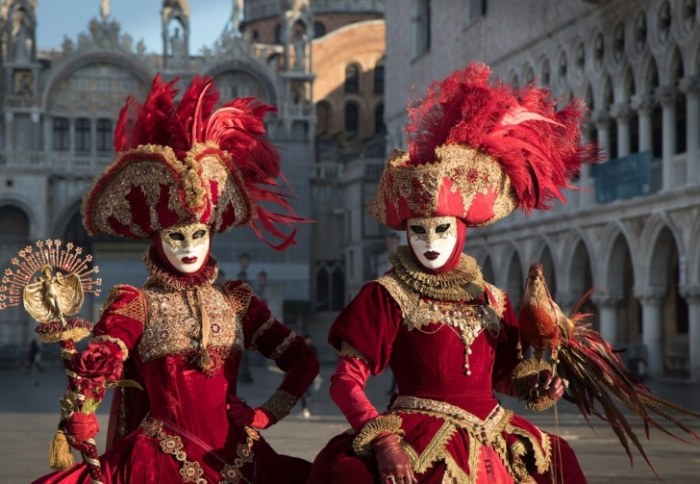
The Official Duration of the Carnival
The Venice Carnival officially lasts for two weeks, starting on a Saturday and ending on Shrove Tuesday, also known as Mardi Gras. The exact dates vary from year to year, as they are determined by the Christian calendar.
The two - week period is filled with a non - stop series of events and activities. From the opening ceremony, which is a grand spectacle of music, dance, and fireworks, to the final day, there is always something exciting happening in the city.
Factors Influencing the Carnival's End
Several factors can influence when the Venice Carnival ends. One of the main factors is the weather. Venice is a city that is prone to flooding, especially during the winter months. If there is heavy rain or high tides, some of the outdoor events may have to be canceled or postponed.
Another factor is the availability of resources. Organizing a carnival of this scale requires a lot of planning, manpower, and financial resources. If there are any issues with funding or staffing, it could affect the duration or quality of the carnival.
The Grand Finale: The Flight of the Angel
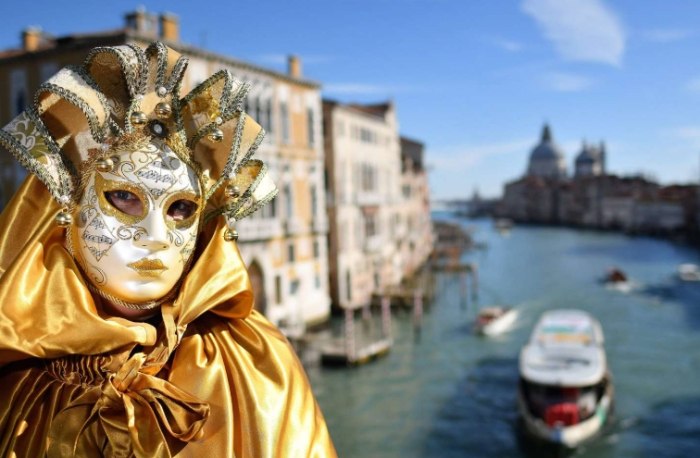
The grand finale of the Venice Carnival is the Flight of the Angel. This event takes place on Shrove Tuesday and is a highlight of the carnival. A young woman, dressed as an angel, is suspended from a cable and "flies" from the top of the Bell Tower of St. Mark's to the square below.
The Flight of the Angel is a symbol of the end of the carnival. It is a moment of celebration and reflection, as people bid farewell to the festivities and look forward to the next year's event.
Post - Carnival Reflections
After the Venice Carnival ends, there is a period of reflection for the local community. We take stock of the successes and challenges of the carnival. We also start to think about ways to improve the event for the following year.
For tourists, the end of the carnival marks the end of a magical experience. Many leave with memories of the colorful costumes, the delicious food, and the warm hospitality of the Venetian people.
Preparations for the Next Year's Carnival
Even before the current carnival has ended, preparations for the next year's event are already underway. Local artisans start working on new costumes and masks. Organizers begin planning the schedule of events and securing venues.
There is a sense of excitement and anticipation as we look forward to the next Venice Carnival. We know that it will be another opportunity to showcase our city's unique culture and traditions to the world.
The Carnival's End and Local Life
The end of the Venice Carnival also has an impact on local life. The city, which has been bustling with tourists and activity for two weeks, starts to return to its normal rhythm. The streets are less crowded, and the shops and restaurants see a decrease in business.
However, the memories of the carnival live on. The local community takes pride in the success of the event and looks forward to the next time we can come together to celebrate our city's rich heritage.
Q&A
What is the Venetian Carnival famous for?
The Venetian Carnival is famous for its elaborate costumes, the iconic Venice Carnival masks, and the lively atmosphere. The costumes are often handmade and can be extremely intricate, featuring rich fabrics, feathers, and jewels. The Venice Carnival masks are a symbol of anonymity and transformation, allowing people to escape their daily lives and assume a new identity. The lively atmosphere is created by the music, dance, and the sense of celebration that permeates the city during the carnival period.
Why is Carnival a 'monument' in Venice?
The Venice Carnival is considered a "monument" in Venice because it is an integral part of the city's cultural identity. It has a long and rich history that dates back centuries. The carnival reflects the city's unique blend of art, culture, and tradition. It is a time when the city comes alive with creativity and excitement, and it attracts visitors from all over the world. The carnival is also a way to preserve and pass on the city's heritage to future generations.
When did the Carnival start in Venice?
The Venice Carnival can be traced back to the 11th century. It started as a religious festival associated with the period before Lent. Over time, it evolved into a more secular and festive event, reaching its peak of popularity in the 18th century. Despite a period of decline in the 19th century, the carnival was revived in the 20th century and has since become a major international event.